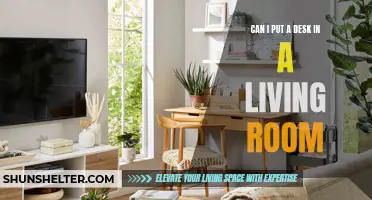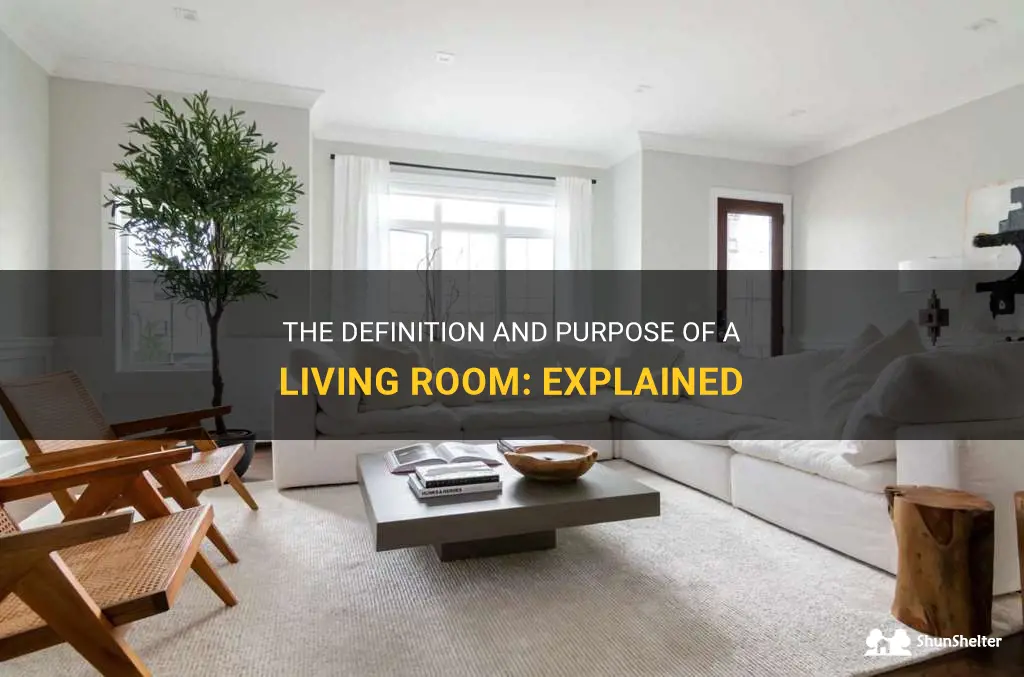
A living room is not just another room in our homes; it is the heart of our living spaces. It is a space where we relax, entertain, and create memories with our loved ones. Whether it's movie nights, game nights, or simply curling up with a good book, the living room is the go-to place for comfort and relaxation. From cozy sofas and plush rugs to warm lighting and stylish decor, the living room reflects our personal style and sets the tone for the rest of our home. So, come on in, make yourself comfortable, and let's explore the wonders of the living room!
What You'll Learn
- What is the purpose of a living room in a home?
- How is a living room typically designed and decorated?
- What are some common features or furniture found in a living room?
- Is a living room used for both formal and informal gatherings?
- How does the layout of a living room affect the overall flow and functionality of a home?

What is the purpose of a living room in a home?
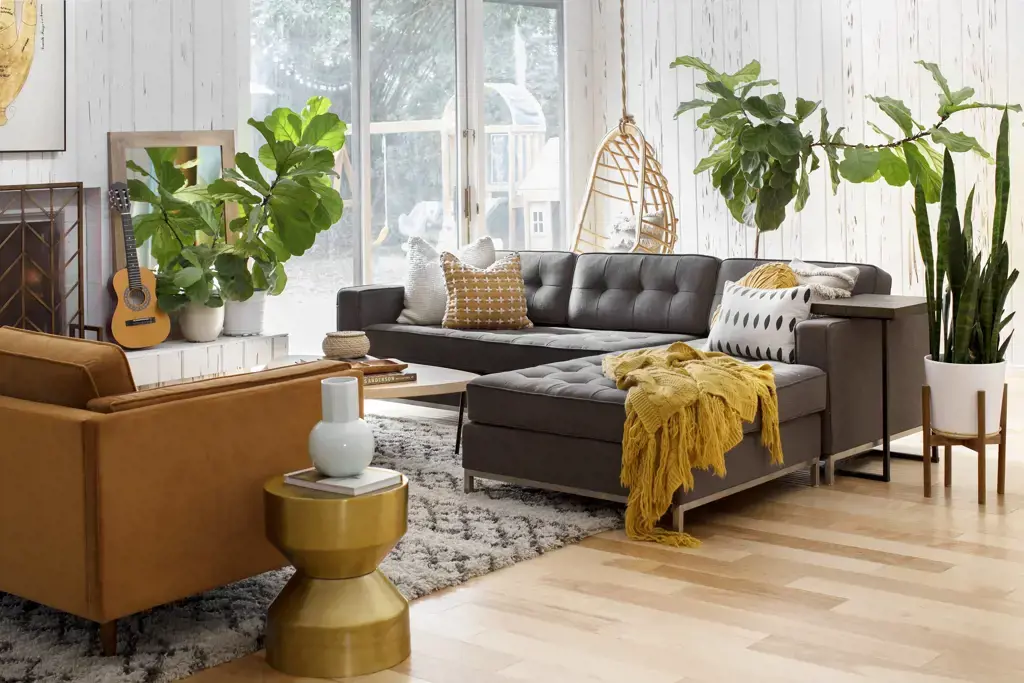
The living room is a central space in a home that serves several important purposes. It is a place where family members and guests can gather to relax, socialize, and entertain. The purpose of a living room in a home is multi-faceted, and it contributes to the overall functionality and comfort of the space.
One of the main purposes of a living room is to provide a comfortable and inviting space for relaxation. After a long day at work or school, the living room offers a cozy area where individuals can unwind and recharge. The room is typically equipped with comfortable seating, such as sofas or armchairs, allowing people to sit back and relax while reading a book, watching television, or simply enjoying the company of family and friends.
Furthermore, the living room is a space for socialization. It is a common gathering place for family members to spend quality time together. Whether it is engaging in conversations, playing board games, or watching movies, the living room provides an area where people can come together and bond. It is often equipped with a television or entertainment system, allowing for shared experiences and entertainment.
Additionally, the living room is frequently used for entertaining guests. Whether it is hosting a dinner party, celebrating a special occasion, or having friends over for a casual visit, the living room serves as a welcoming space for guests. It allows hosts to offer a comfortable and inviting environment for their visitors, ensuring that everyone feels at home.
From a practical standpoint, the living room is also a space for storage and organization. It often contains shelves, cabinets, or drawers to store books, magazines, and other items. These storage solutions help keep the living room clutter-free and organized, contributing to a clean and tidy space.
To create an ideal living room, the layout, furniture, and décor should all be carefully considered. For example, the seating arrangements should be arranged in a way that promotes conversation and interaction. Color schemes and lighting choices can also influence the atmosphere and mood of the room, whether it is a cozy and warm ambiance or a bright and lively environment.
In conclusion, the purpose of a living room in a home is to provide a comfortable, relaxing, and inviting space for individuals to unwind, socialize, and entertain. It serves as a central hub for family activities, a place for guests to feel at home, and a practical area for storage and organization. By considering the various purposes and functions of the living room, homeowners can design a space that meets their specific needs and supports a comfortable and enjoyable lifestyle.
Creating a Stylish and Functional Narrow Living Room: Tips and Ideas
You may want to see also

How is a living room typically designed and decorated?
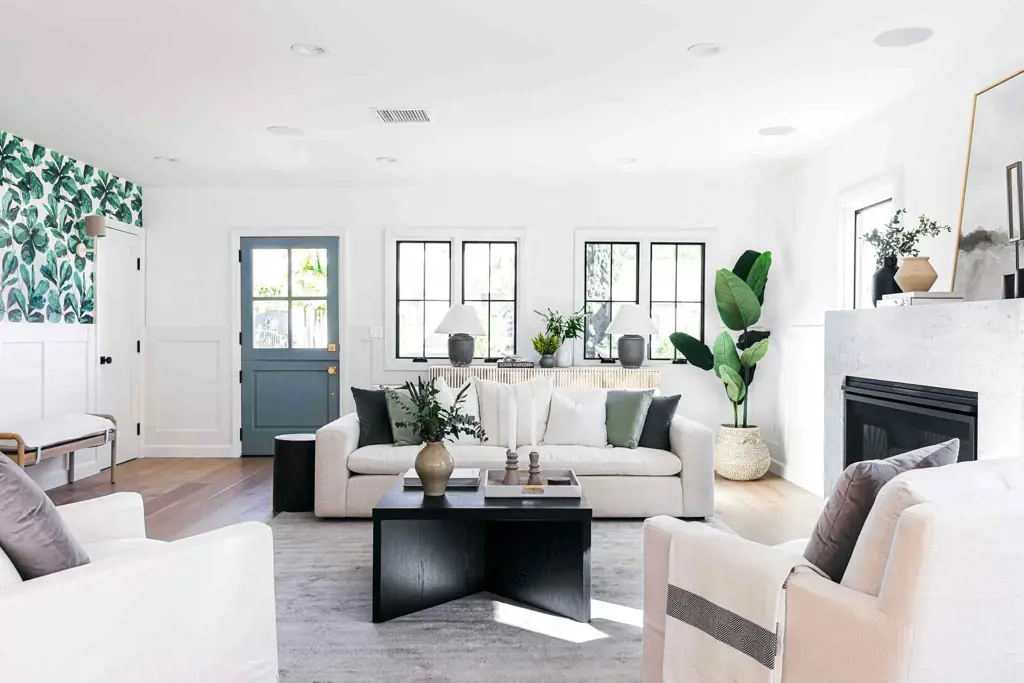
A living room is the central space in a home where people relax, socialize, and entertain. It is essential to have a well-designed and thoughtfully decorated living room that reflects your personal style while also creating a comfortable and inviting atmosphere. Here are some steps to consider when designing and decorating a living room:
- Determine the Function: Before you start designing, think about how you will use the living room. Will it be primarily used for entertaining guests or as a cozy space for family gatherings? Understanding the primary function will help guide your design decisions.
- Plan the Layout: Consider the size and shape of the room and create a furniture layout that maximizes the available space. Arrange the seating in a way that promotes conversation and allows for easy traffic flow. Consider focal points such as windows, fireplaces, or television screens when planning the layout.
- Choose a Color Scheme: Select a color palette that sets the mood you want to create in your living room. Soft, neutral tones create a calming and sophisticated atmosphere, while bold and vibrant colors can add energy and personality. Consider using a combination of colors to create depth and interest.
- Select Furniture: Invest in comfortable and durable furniture pieces that suit your lifestyle. Start with the essentials such as a sofa, coffee table, and accent chairs. Add additional pieces like side tables and console tables as needed. Consider the style, size, and proportion of the furniture to ensure a cohesive and balanced look.
- Accessorize: Decorative accessories are essential for adding personality and style to the living room. Add throw pillows, blankets, and rugs in colors and patterns that complement the overall design. Hang artwork or photographs on the walls to create a focal point. Incorporate plants or flowers to bring life and freshness into the space.
- Lighting: Proper lighting is crucial in a living room. Utilize a combination of ambient, task, and accent lighting to create a layered and inviting atmosphere. Install overhead lighting for general illumination, table lamps for task lighting, and floor lamps or sconces for additional accent lighting.
- Consider Storage: Incorporate storage solutions into the living room to keep it organized and clutter-free. Utilize bookshelves, cabinets, or ottomans with hidden compartments for storing books, magazines, and other items. Consider using decorative baskets or boxes to hide smaller items.
- Create a Focal Point: Every living room should have a focal point that draws the eye and anchors the space. This could be a fireplace, a large piece of artwork, or a beautiful view from a window. Arrange furniture and accessories around the focal point to enhance its impact.
- Pay Attention to Details: Small details can make a big difference in the overall design of a living room. Ensure that curtains or blinds coordinate with the color scheme and style of the room. Maintain a cohesive aesthetic by matching hardware finishes on doors, windows, and furniture. Pay attention to the placement and arrangement of accessories for a polished look.
- Personalize the Space: Lastly, make the living room your own by infusing it with your personal style and interests. Display cherished mementos or collections that reflect your personality. Incorporate elements that bring you joy, whether it's a favorite color, pattern, or texture.
In conclusion, designing and decorating a living room involves careful planning and consideration of various elements. By following these steps and infusing your personal style, you can create a beautiful and functional living room that becomes the heart of your home.
How to Float Living Room Furniture Without a Floor Outlet
You may want to see also

What are some common features or furniture found in a living room?
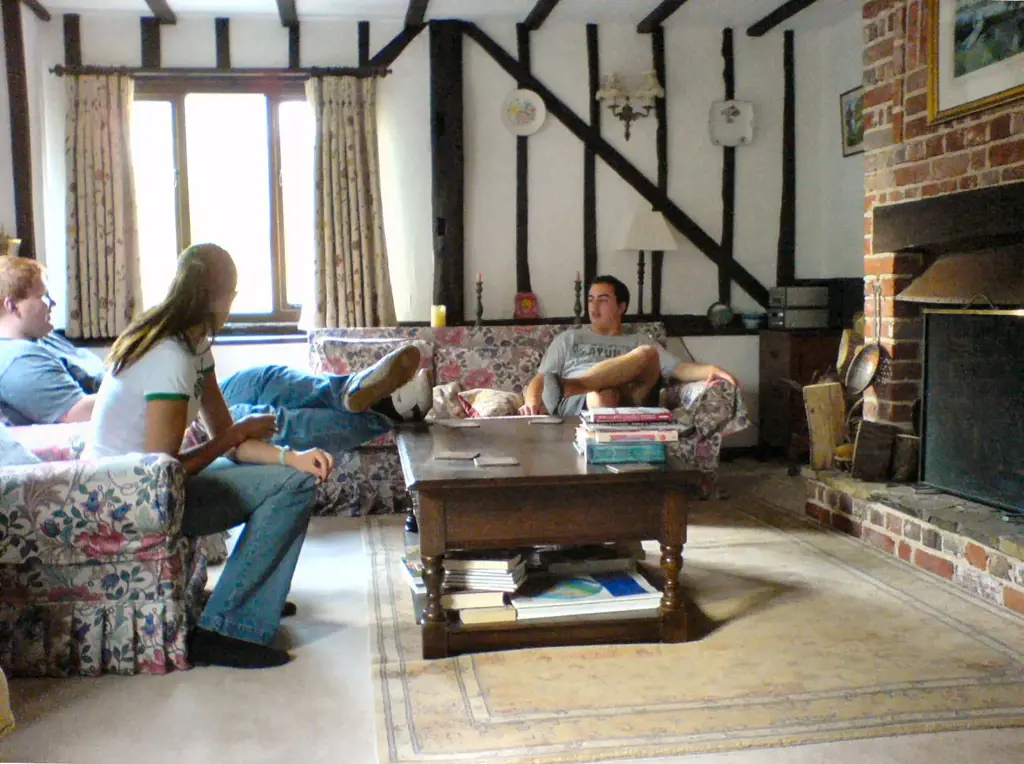
When it comes to designing a living room, there are several common features and furniture that are almost always found in this space. These elements not only enhance the functionality of the room but also contribute to its overall aesthetic appeal. Whether you are decorating a small apartment or a large family home, incorporating these features and furniture pieces into your living room can help create a comfortable and inviting space.
One of the most important features in a living room is seating. This can include a variety of furniture pieces such as sofas, chairs, and sectionals. The sofa is typically the largest and most dominant piece of furniture in the room. It provides a comfortable place for family and guests to sit and relax. Chairs are often placed around the room to offer additional seating options. Sectionals are a popular choice for larger living rooms as they can provide ample seating space for a group of people.
Coffee tables are another staple in living room design. These low-lying tables are typically placed in front of the sofa and serve as a place to rest drinks, books, and other items. They can also be used for decorative purposes, such as displaying a vase of flowers or a collection of books. Coffee tables come in a variety of styles and materials, allowing you to choose one that fits your personal taste and complements the overall design of the room.
Another common feature found in living rooms is a television. This electronic appliance serves as a focal point in many living rooms and is often mounted on a wall or placed on top of a media console or TV stand. The seating arrangement is often centered around the television to allow for comfortable viewing. Some living rooms also incorporate built-in shelving or cabinets to house additional electronics, such as a DVD player or gaming consoles.
In addition to these common features, living rooms often include other furniture pieces and accessories to enhance the functionality and style of the space. Bookshelves or bookcases can be used to display books, decorative items, or personal collections. Entertainment centers or media consoles provide storage space for electronics and media. Area rugs can help define seating areas and add warmth and texture to the room.
When designing a living room, it is important to consider the size and layout of the space, as well as your personal preferences and lifestyle. For example, if you have young children, you may want to choose furniture that is durable and easy to clean. If you enjoy hosting gatherings, you may want to incorporate additional seating options or a larger dining table.
In conclusion, there are several common features and furniture pieces found in living rooms. These elements, such as seating, coffee tables, and televisions, not only enhance the functionality of the space but also contribute to its overall aesthetic appeal. By choosing furniture and accessories that suit your personal style and lifestyle, you can create a comfortable and inviting living room that is both functional and beautiful.
Finding the Perfect Spot for Your Chaise Lounge in the Living Room
You may want to see also

Is a living room used for both formal and informal gatherings?
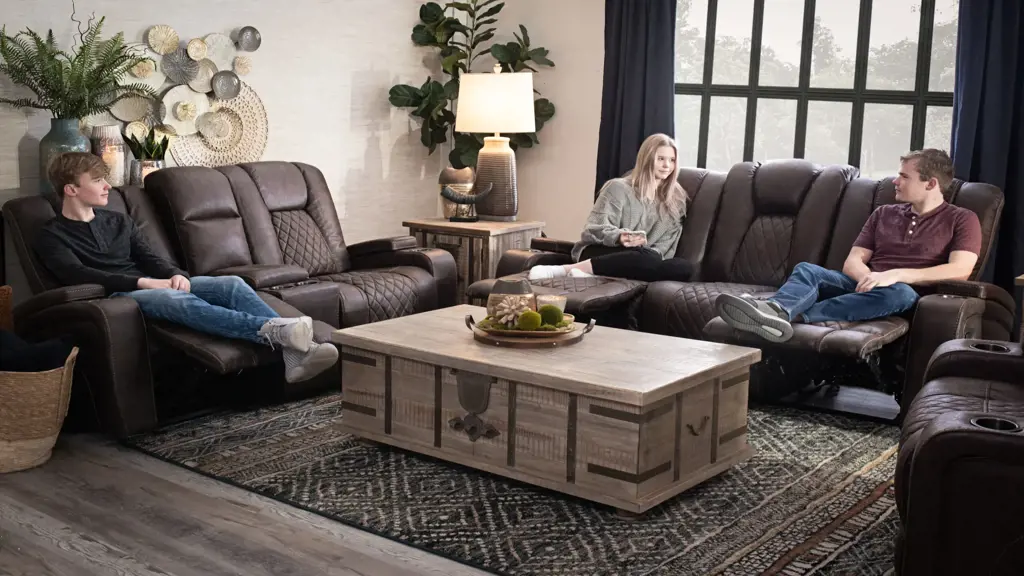
A living room is typically used for both formal and informal gatherings. It serves as a central space in the home where families and friends come together to relax, socialize, and entertain. The design and layout of the living room can greatly influence how it is used and the atmosphere it creates.
Formal gatherings in the living room often involve more structured activities such as hosting dinner parties or celebrating special occasions. These events may require additional seating, a designated dining area, and a more formal decor. The furniture and accessories chosen for these gatherings are typically more elegant and sophisticated, creating a sense of formality and elegance.
On the other hand, informal gatherings in the living room are more relaxed and casual. These may include watching movies or TV shows, playing board games, or simply spending time together as a family. The furniture and decor in the living room can accommodate the comfort and relaxation needed for these occasions. Comfortable sofas and chairs, soft lighting, and cozy rugs create an inviting and laid-back atmosphere.
The versatility of a living room allows it to be used for a variety of different activities and gatherings. It can serve as a space for children to play and do homework, a home office for those working remotely, or a place to read and enjoy a cup of coffee. The flexibility of the furniture and decor can easily adapt to the changing needs and preferences of the individuals using the space.
Additionally, the layout and design of the living room can influence the flow and functionality of the space. A well-designed living room will have a logical arrangement of furniture that allows for easy movement and conversation. This can promote interaction and engagement during gatherings, whether formal or informal.
For example, a living room with a central seating area surrounded by additional seating options, such as a sectional sofa or armchairs, can accommodate both large and small groups. This layout encourages conversation and interaction among guests, creating a welcoming and inclusive atmosphere.
In conclusion, a living room is indeed used for both formal and informal gatherings. Its versatility and adaptability allow it to serve as a space for a wide range of activities and occasions. The design and layout of the living room can greatly enhance the atmosphere and functionality, creating a comfortable and inviting space for all types of gatherings.
How to Arrange Living Room Furniture for a Cozy TV and Fireplace Setup
You may want to see also

How does the layout of a living room affect the overall flow and functionality of a home?
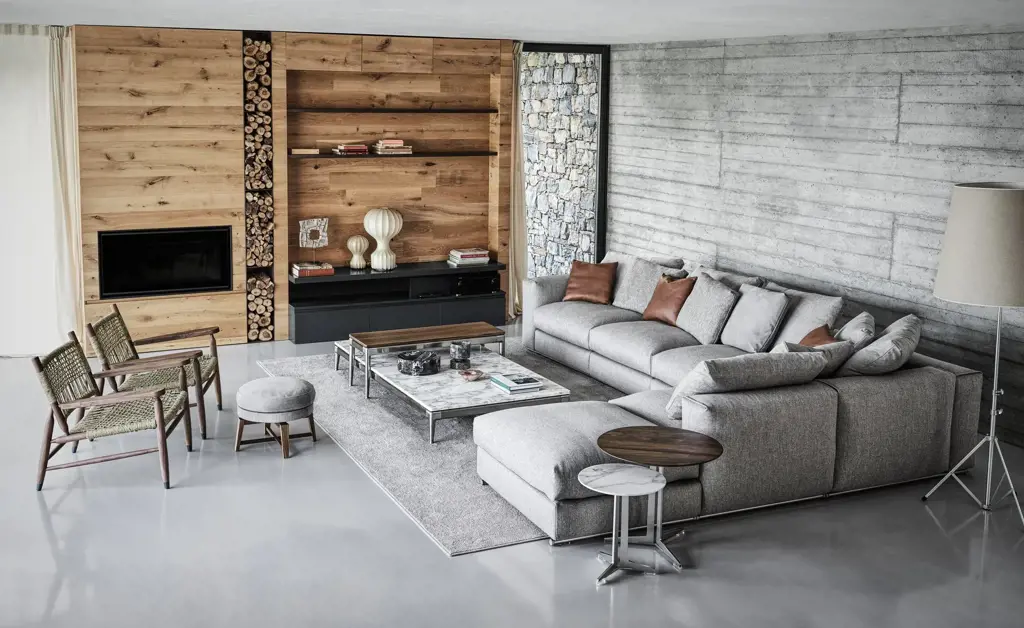
The layout of a living room can have a significant impact on the overall flow and functionality of a home. A well-designed living room not only creates a visually appealing space but also enhances the livability and usability of the entire home. In this article, we will explore how the layout of a living room can affect the flow and functionality of a home and provide practical tips for optimizing the space.
Firstly, the layout of a living room can greatly influence the flow of movement within a home. An open and spacious layout allows for easy movement between different areas of the home, creating a sense of continuity and harmony. On the other hand, a cramped and cluttered living room can impede the flow of movement, making the entire home feel cramped and uncomfortable. Therefore, it is essential to consider the size and arrangement of furniture when planning the layout of a living room. Placing furniture in a way that promotes easy navigation and maintains clear pathways can greatly enhance the overall flow of the home.
Secondly, the functionality of a home can be significantly improved through a well-thought-out living room layout. Different activities often take place in the living room, such as family gatherings, entertaining guests, or relaxation. A flexible layout that accommodates these various activities can greatly enhance the functionality of the space. For example, incorporating comfortable seating arrangements, such as sofas and armchairs, creates an inviting space for socializing and relaxing. Additionally, incorporating storage solutions, such as built-in shelving or hidden storage ottomans, can help keep the living room organized and clutter-free, further enhancing its functionality.
It is also important to consider the relationship between the living room and other areas of the home. The living room often serves as a central hub, connecting different rooms and spaces. A well-designed layout can facilitate a smooth transition between these areas, creating a cohesive and harmonious home. For instance, positioning the living room near the kitchen and dining area allows for easy flow and interaction between these spaces, making it convenient for socializing and entertaining. Similarly, aligning the living room with outdoor spaces, such as a patio or garden, can create a seamless connection between indoor and outdoor living, expanding the overall functionality of the home.
To optimize the layout of a living room, here are some practical tips to consider:
- Measure the space: Before making any furniture arrangements, accurately measure the dimensions of the living room to ensure that furniture fits appropriately without overcrowding the space.
- Create clear pathways: Arrange furniture in a way that promotes easy movement and clear pathways throughout the living room. Avoid blocking the natural flow of traffic.
- Consider focal points: Identify the focal points of the living room, such as a fireplace or a large window, and arrange furniture to accentuate these features. This enhances the visual appeal and functionality of the space.
- Use modular furniture: Opt for modular furniture pieces that can be easily rearranged to accommodate different activities or changing needs. This adds versatility and flexibility to the living room layout.
- Incorporate storage solutions: Integrate storage solutions, such as built-in shelves, storage ottomans, or wall-mounted cabinets, to maximize space and keep the living room organized.
In conclusion, the layout of a living room has a profound impact on the overall flow and functionality of a home. By considering factors such as flow of movement, functionality, and relationship to other spaces, homeowners can create a well-designed living room that not only enhances the visual appeal of their home but also improves its livability and usability. Implementing practical tips, such as measuring the space, creating clear pathways, and incorporating storage solutions, can further optimize the layout of a living room and create a harmonious and functional living space.
Transform Your L Shaped Living Room with These Decorating Tips
You may want to see also
Frequently asked questions
A living room is a space in a house or apartment that is primarily used for relaxation and entertainment. It is often the main gathering area for family and friends.
Unlike bedrooms or kitchens, living rooms are more commonly used for socializing and entertaining guests. They are typically furnished with comfortable seating options such as sofas and chairs, and may also include a TV or entertainment center.
Common furniture pieces found in a living room include sofas, chairs, coffee tables, and entertainment centers. Other optional furniture items may include bookshelves, side tables, and ottomans.
The decor of a living room can vary depending on personal style and preferences. However, it is common to see living rooms decorated with a combination of comfortable seating, decorative accent pillows, artwork, rugs, and lighting fixtures.
Living rooms are versatile spaces that can be used for various activities such as watching TV, playing board games, reading, having conversations, and entertaining guests. The layout and design of a living room often reflect the activities that will take place in the space.




